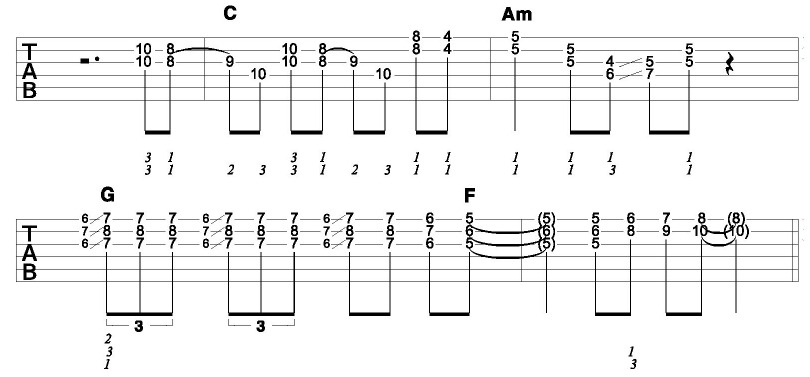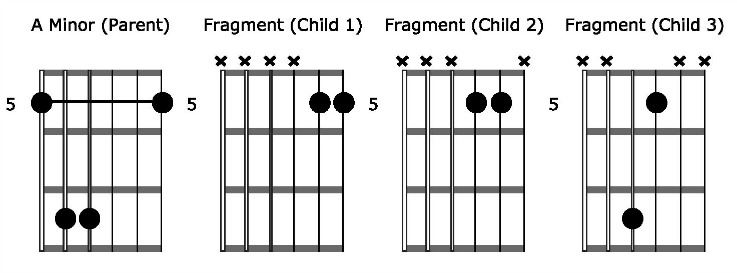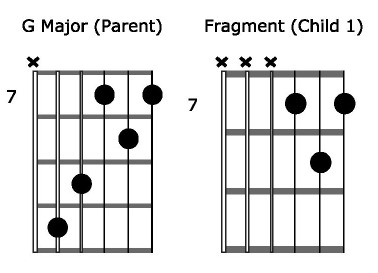Chords are great for rhythm guitar playing, something we all know. However, what is not so well known is that chords are also a great tool for soloing on your acoustic guitar. From using them here and there amongst your single note lines through to a full blown solo, chords have the potential to really breathe life into your acoustic guitar playing, drastically improving it.
Tension and release is a big part of what makes a solo sound great, and using chords in your soloing will certainly create a lot of this. Music is all about tension and release, and without it, you will be left with something that sounds dull, boring, and lifeless to say the least. Using your chords in this way, to create tension and release in your soloing, will certainly grab the attention of those who hear you play leaving them wanting more.
I can remember back to my early days of playing acoustic guitar and really struggling to sound good while soloing. I played a lot of electric too and was fine when it came to soloing, but the acoustic was a different story, and a major source of frustration for me. This continued for some time before I realised that simply bashing away doing the same thing over and over, regarding my acoustic guitar soloing, wasn’t going to work. It’s fascinating how we get stuck in a pattern of doing the same stuff over and over expecting a different result.
What I eventually realised was that I would need a set of tools, if you like, that I could use to make my solos sound great. Simply playing notes for the sake of playing notes wasn’t going to cut it. I needed a variety of tools that I could use in various situations to really bring my acoustic guitar soloing to life, drastically improving it along the way.
Chords were one such tool.
Breaking Your Chords Up Into Smaller Pieces (Fragments)
Chords sound fantastic mixed in with your single note lines of the solos you play. They bring a whole new texture to your playing and it’s the contrast of this with the single notes that makes chords such a great tool for your soloing. You will feel so much more confident ripping out an acoustic solo once you have the skill of adding the element of chords to them.
When I am talking about using chords in the context of soloing, I am referring to smaller, bite size pieces of the larger forms you are more familiar with. These are commonly known as chord fragments. Trying to use full forms like your open and bar chords, in soloing, generally doesn’t work very well. They are much too clumsy and awkward.
Like the name suggests, chord fragments are all about breaking down larger chord forms into smaller pieces. In doing so, you are essentially multiplying the chord shapes you already know on your guitar. Knowing which fragments belong to which chords is crucial in being able to visualise these fragments on your guitar. I like to think of the larger chord form as the “parent” and the fragments that are created by breaking the chord down as the “children”. I will go into more detail about this shortly.
How To Use Chord Fragments To Spice Up Your Solo Lines
Let’s have a look at what chord fragments can do for your solo lines.
Here is a line from a solo using all single notes:

Here it is again with the inclusion of chord fragments:

Notice the texture and depth you get with the fragments added. I chose to go all out here and use fragments throughout the whole line. You could use them a little more sparingly if you wish, leaving some single notes in for a nice contrast. It’s up to you.
I am also approaching some of the fragments by a fret below in the example above. This adds a nice touch to the line giving it more movement.
There are many ways you can go about adding fragments to your solo lines. This is just one example. You should try it out yourself with your own solo ideas.
How To Organise Your Chord Fragments (Which Children Belong To Which Parent)
It’s absolutely crucial that you can visualise where each chord fragment is coming from so that you have the freedom to use them in your improvisations and general playing. You need to be able to immediately visualise the larger shape that the fragment you are using comes from.
As mentioned earlier, a great way to go about this is to think of the larger chord form as the parent and the fragments you break it into as the children of the larger form.
Thinking in this way for our example above we would get the following:
Chord progression:
C Am G F
Chord fragments:




This should clearly illustrate for you how to visualise your chord fragments on the fretboard and organise them accordingly into relationships with the larger chord forms (aka the parent).
Don’t underestimate the importance of doing this. It will allow you the freedom to use chord fragments to spice up your acoustic soloing without having to think about it first.
Using chords in your solos will add so much depth and contrast to your guitar playing. To take this much further with detailed and specific examples, download this free ebook and audio on how to create killer acoustic guitar solos using chords.
About the author: Simon is a highly successful guitar teacher hailing from Melbourne, Australia. He has taught guitar for over 20 years, catering to all ages in the styles of blues, rock, jazz, and fingerpicking. Simon also specialises in the acoustic guitar in a variety of styles and offers online acoustic guitar instruction










